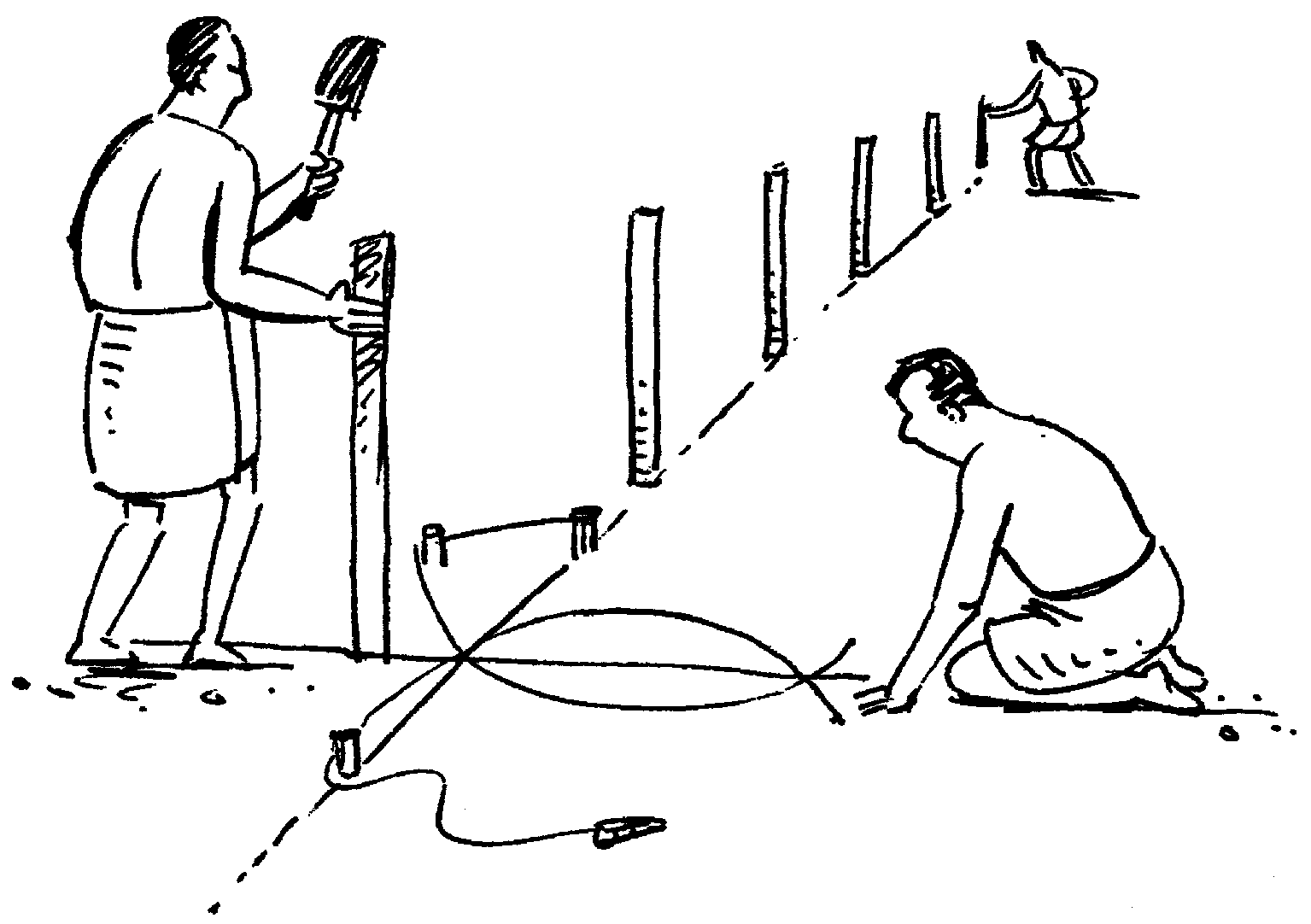| << Chapter < Page | Chapter >> Page > |
1.
(b)
(c)
(d) pentagon; hexagon
(e)
2. levelling instrument; plummet
1. Let us revise!

b) Complete the following so that the face will be symmetrical.

c) Keep to the pattern and complete the following tessellations.

d) What do we call the following two-dimensional figures?

_____________________________________________

_____________________________________________
e) Trace the shapes below. Cut them out and build a square. Paste them in the block below.

2. Did you know?
More than 2 500 years ago, the Egyptians of North Africa were measuring lengths. They realised that buildings, (the pyramids), had the same form but could have different sizes. To make sure their lines were straight, they stretched rope or wire between two pegs that had been planted in the ground. To measure the length of the base of the pyramid they made knots in the rope, equally far apart from each other. The main unit that they used for length was the “elbow-measure”. This was the length of the Pharaoh’s forearm – from his elbow to the tip of his middle finger.

To make sure that the walls were straight, they used a rope with a weight at the end of it. This was hung from the top – most point of the wall and the weight could swing freely. When it stopped swinging they could see if the wall was straight or not.

Learning Outcome 3: The learner will be able to describe and represent characteristics and relationships between two-dimensional shapes and three-dimensional objects in a variety of orientations and positions.
Assessment Standard 3.5: We know this when the learner uses transformations (rotations, reflections and translations) and symmetry to investigate (alone and/or as a member of a group or team) properties of geometric figures;
Learning Outcome 4: The learner will be able to use appropriate measuring units, instruments and formulae in a variety of contexts.
Assessment Standard 4.4: We know this when the learner describes and illustrates ways of measuring in different cultures throughout history, including metric and other formal measuring systems.

Notification Switch
Would you like to follow the 'Mathematics grade 7' conversation and receive update notifications?